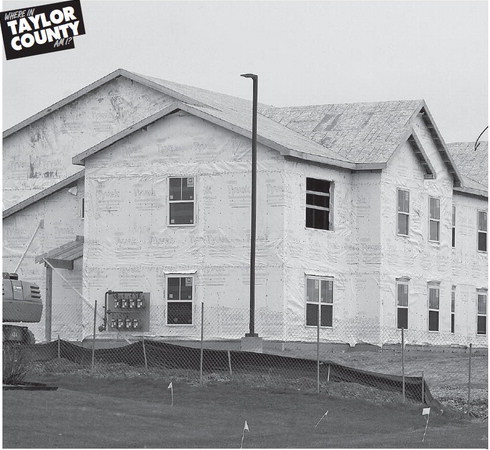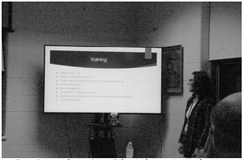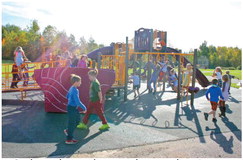Billionaire battle shaping up in state’s primary
Well ahead of the Wisconsin presidential primary on April 7, President Trump and former New York City Mayor Michael Bloomberg have aggressively built a campaign presence on the ground here, while Bloomberg has the state’s airwaves virtually to himself.
Besides Bloomberg, Massachusetts Sen. Elizabeth Warren is the only one of Trump’s Democratic challengers to open a Wisconsin office and deploy paid staff here as of mid-February. Some analysts add that 2016 Wisconsin presidential primary winner Bernie Sanders likely will be competitive in the April 7 contest, given his ability to keep raising money from small donors. A new poll from UW-Madison — done before his big victory in the Nevada caucuses — reported a double-digit lead.
For now, most of the Democratic field is still focused on the early nominating contests, pivoting from Iowa and New Hampshire to Nevada and South Carolina, as they gear up for Super Tuesday on March 3 and several major primaries in the following weeks. The results of those races could lead some of the remaining contenders to drop out before they reach Wisconsin.
All told, 2,704, or 68 percent, of the 3,979 pledged delegates who will meet in Milwaukee in July will be selected before the Democratic National Convention’s host state gets to vote. The Super Tuesday contests on March 3 will choose 1,351 delegates, more than one-third of the total, compared with 77 from Wisconsin.
In a normal presidential election year, none of the campaigns would even start hiring Wisconsin staff until February or so, state Republican Party Chairman Andrew Hitt says. But as state Democratic Party Chairman Ben Wikler notes, “Nothing about this election cycle is normal.”
One reason is that Trump and Bloomberg don’t have to worry about early contests. Bloomberg, who entered the race later than nearly all of his rivals, made a strategic decision to skip the first four states. Trump rolled up overwhelming majorities over his last remaining primary challenger, former Massachusetts Gov. William Weld, in Iowa and New Hampshire, and his allies canceled the GOP’s Nevada caucus and South Carolina primary.
That frees Trump and Bloomberg to spread their resources to more states, including Wisconsin. As Trump positions himself for the general election, Bloomberg spends heavily to establish himself as a leader in a field of candidates who have been campaigning much longer than him.
Trump isn’t the only one who’s already looking ahead to November. With analysts predicting Wisconsin could play a decisive role in the Electoral College, both parties are using this spring’s state Supreme Court race as a test of their organizing capacities for the presidential election.
Incumbent Justice Daniel Kelly, appointed by ex-Gov. Scott Walker, is seeking his first full term against a challenge from Dane County Circuit Judge Jill Karofsky, after the Feb. 18 primary eliminated Marquette University law Prof. Ed Fallone. Although the race is offi cially nonpartisan, Republicans are backing Kelly, who has been endorsed by Trump, while Democrats favor Karofsky, who advocates a social justice agenda.
Conventional wisdom suggests Karofsky holds the advantage, because the general election coincides with a hotly contested Democratic presidential primary that should boost liberal turnout. In the Democratic stronghold of Milwaukee, turnout is also likely to be increased by a contested mayoral race, a wideopen campaign for county executive and a Milwaukee Public Schools tax referendum, Wikler adds.
By contrast, state Republicans kept Weld off the GOP primary ballot, ensuring Trump would be unopposed but leaving only the court race to draw conservatives. Indeed, Republican lawmakers were so worried about Kelly’s chances that they floated the idea of separating the dates of the presidential primary and the high court race, backing off only after local clerks warned the plan would be both expensive and unworkable.
Wikler says the court race will be “a huge focus for organizing,” adding, “We will be turning out every Democrat.” He cites the energy generated by more than 100 canvassing efforts launched for the judicial contest Feb. 8.
“If we can do that in freezing weather for a Supreme Court race, we can do great things” for a presidential campaign in warmer months, Wikler says.
Hitt concedes Kelly has an uphill battle, but says it’s possible, particularly in a state with a history of crossover voting.
The high court primary offered a preview of how those get-out-the-vote efforts could play out in the presidential primary and general elections. The turnout Feb. 18 topped 700,000, the highest in more than 20 years, with Kelly capturing about half the vote to 37 percent for Karofsky and 13 percent for her fellow liberal Fallone. That was 16 percent of eligible voters, suggesting the April and November elections are on track to exceed the 2016 turnout marks of 47 percent and 67 percent, respectively.
The Capitol Report is written by editorial staff at WisPolitics.com, a nonpartisan, Madison-based news service that specializes in coverage of government and politics, and is distributed for publication by members of the Wisconsin Newspaper Association.
Copyright © WisPolitics.com





